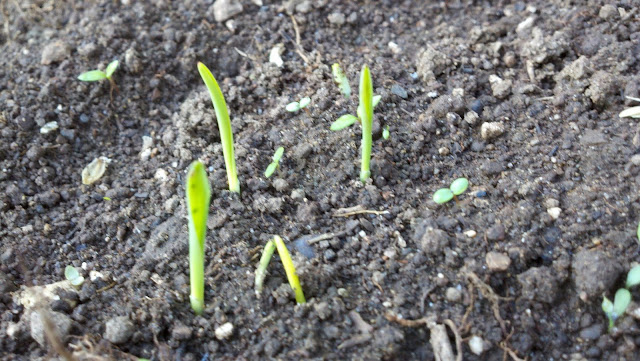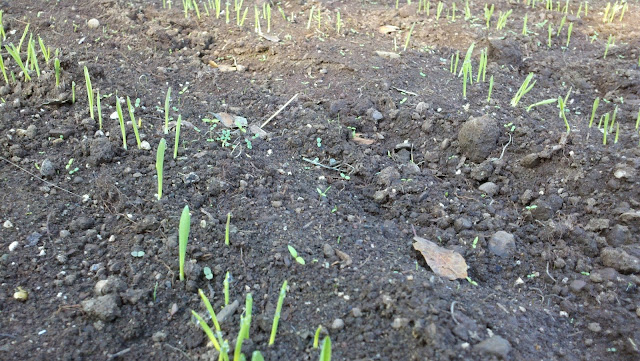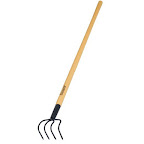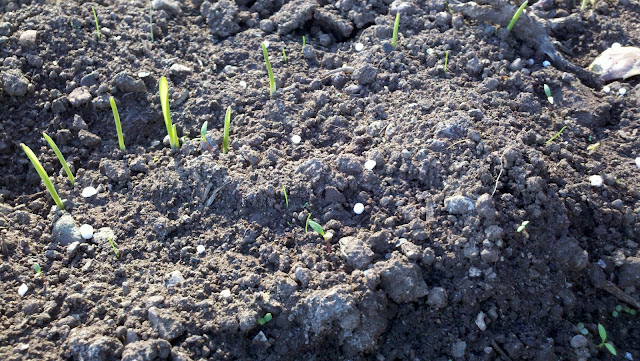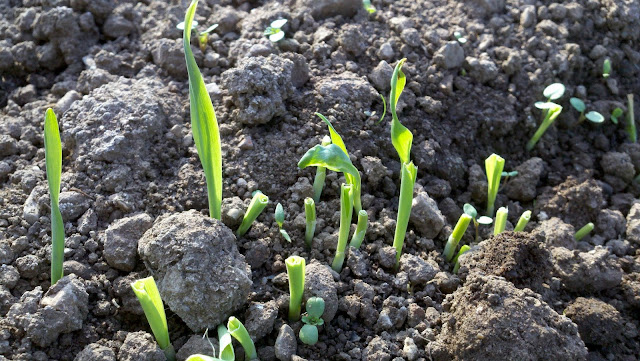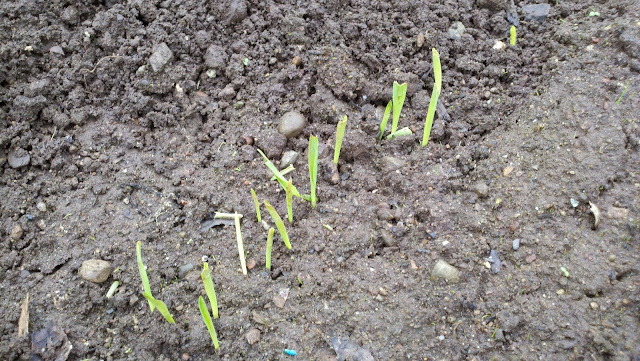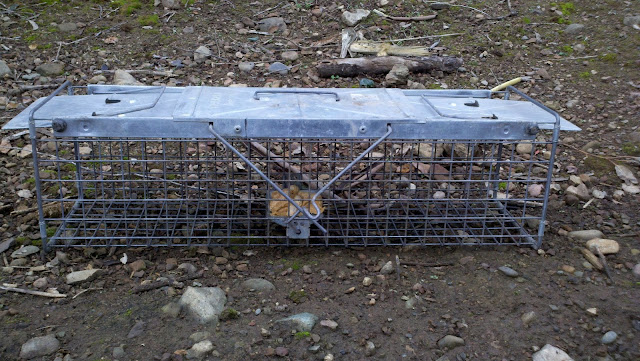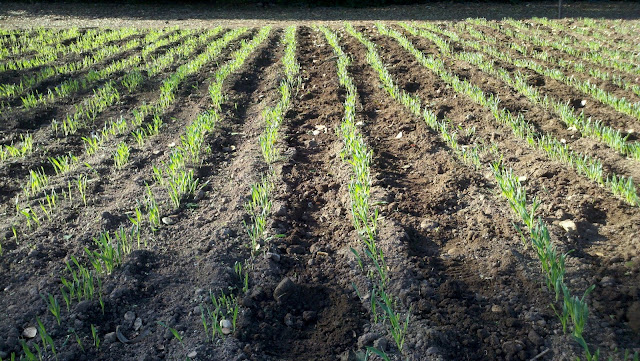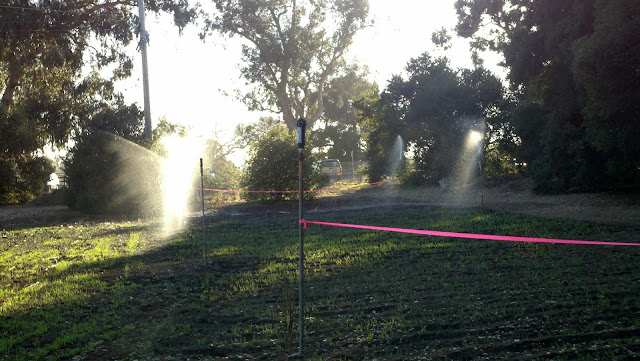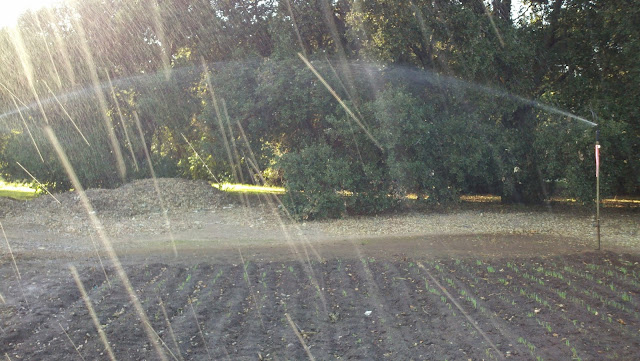Rain came early this morning, and the sky was clear by the time my partner and I got out to the field. We practiced a bit with the seeder full of malt, then switched over to seeds. We followed up each seeded row on foot to press the dirt down around the seeds, and to cover up any seeds that were left exposed.
The rows were fairly straight, but the mounds I had dug actually made it very difficult to keep the seeder going in a straight line at any speed. I'd say most rows deviated 3-4 inches within the 14" row. I'd suggest to anyone else trying this to forget about digging mounds and trenches, and just seed into flat tilled earth.


The estimates for the seeding rate of the Earthway with plate 22 were pretty accurate. We seeded two 33' x 33' plots with single passes of Conlon seeds in 14" rows, and one 33' x 33' plot with double passes. I reserved a few grams of seed to play with later on, and the five pound bag ran out just shy of finishing up the last of the second-pass rows.
Enough room remained at the ends for one row of Golden Promise and four rows of bere, a Scottish six-row. Those seeds were obtained from the National Plant Germplasm System, which will send you a few grams of seeds, about enough for one 30 foot row. I expanded the bere last spring in my backyard, and was pleasantly surprised to have enough for four rows!
The whole job only took about two hours, and then it was off to enjoy the rest of Saturday. Now that the seeds are in the ground (a few weeks too late, most would agree), some time pressure is relieved. Whew! But now I'm afraid a battle with weeds, insects, viruses, and fungi is about to begin. I'll keep my eye out for the weeds first. I have a hand cultivator and plenty of Roundup -- let's hope the rows were straight enough to allow for some weeding!



